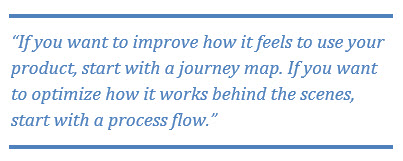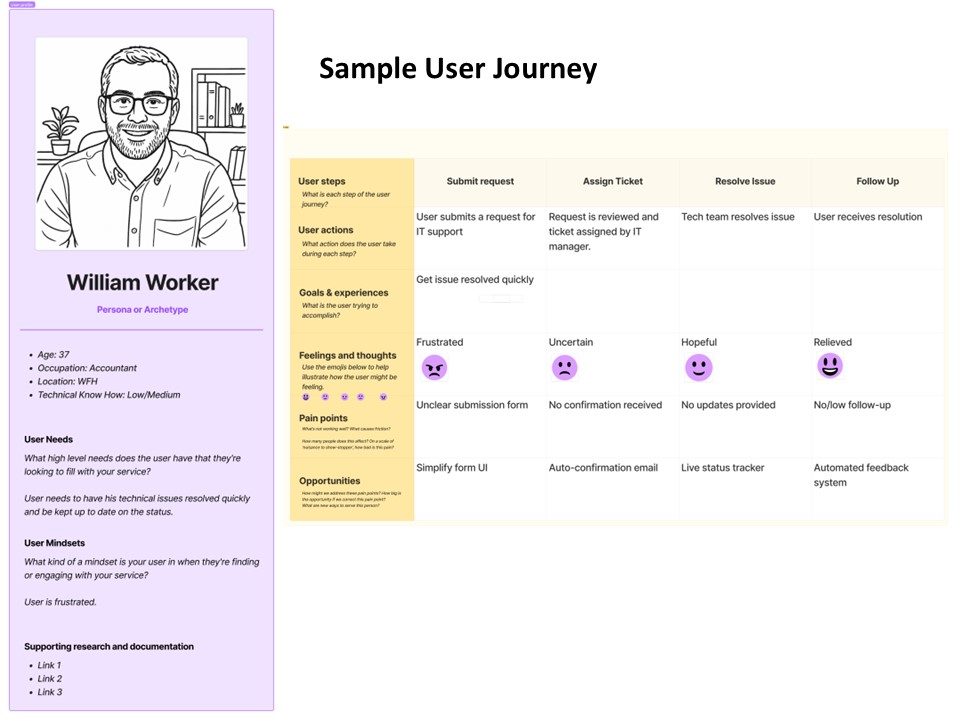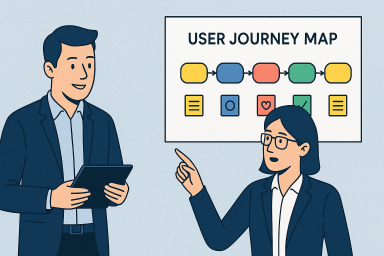In today’s tech-driven world, building great solutions isn’t just about functionality – it’s about delivering an experience that works seamlessly for the user. That’s where user journey mapping comes in. It’s a powerful tool for understanding what users go through when they interact with your product or service, and how technology can step in to make that experience better, faster, and easier.
What Is a User Journey Map?
A user journey map is a visual narrative of the steps a user takes to accomplish a specific goal. But it’s more than just a series of actions—it’s an empathy tool.
A complete journey map typically includes:
- User goals
- Actions and touchpoints
- Emotions and pain points
- Opportunities for improvement
This approach helps teams go beyond task lists and uncover the why behind user behavior.

Why User Journey Mapping Matters
Journey mapping is a powerful communication and planning tool for product managers, UX designers, analysts, and developers alike.
It helps teams:
- Identify friction points in the user experience
- Align around user needs across departments
- Prioritize improvements that create real impact
- Visualize the effect of proposed changes before investing in development

Where Technology Fits Into the Journey
User journey maps shine when it comes to uncovering where and how technology can reduce effort for the user. By visualizing emotions and obstacles, we can spot opportunities to insert smart, targeted tech solutions.
Some examples:
- Slow manual processes → Automate repetitive tasks
- Confusing interfaces → Build intuitive dashboards
- Repetitive support requests → Use tooltips or chatbots
- Long wait times → Provide real-time status updates

Journey Map vs. Process Flow: Know the Difference
It’s easy to confuse user journey maps and process flows, but they serve very different goals:
| User Journey Map | Process Flow |
| User-centered | System or business-centered |
| Emotional and experiential | Logical and operational |
| Visualizes thoughts, feelings, pain points | Maps steps, decisions, and responsibilities |
| Designed for empathy and innovation | Designed for efficiency and structure |

Conclusion: A Strategic Guide to Better Experiences
A well-crafted user journey map is more than a design deliverable—it’s a strategic asset. It helps organizations:
- Uncover user frustrations
- Align teams around key problems
- Identify where technology can make the biggest impact

Sample of a simple user journey map for help desk tickets



